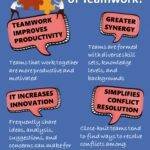
Creating guiding and wicked questions helps to map and understand your challenge
Asking wicked questions helps engage people to reveal challenges and tangled possibilities that aren’t intuitively obvious. They help us to identify inherent paradoxes and frame the challenge which supports subsequent efforts to map and understand the challenge.
This exercise bring to light paradoxical-yet-complementary forces that are constantly influencing behaviors and that are particularly important during change efforts. Wicked Questions make it possible to expose safely the tension between espoused strategies and on-the-ground circumstances and to discover the valuable strategies that lie deeply hidden in paradoxical waters.
A good wicked question:
- Helps us to name the central tensions and the paradoxes (the elephant in the room)
- Surfaces underlying, often contradictory assumptions
- Does not have obvious answers
- Opens up more questions, options, inquiries
- Is NOT a trick question, or rhetorical; not blaming or finger pointing.
Four Structural Elements
1. Structuring Invitation
- Ask, “What opposing-yet-complementary strategies do we need to pursue simultaneously in order to be successful?”
2. How Space Is Arranged and Materials Needed
- Groups of 4 to 6 chairs with or without small round tables
- Paper for recording
3. How Participation Is Distributed
- Everyone involved in the work or topic is included
- Everyone has an equal opportunity to contribute
4. Sequence of Steps and Time Allocation
- Introduce the concept of Wicked Questions and paradox. Illustrate with a couple of examples of Wicked Questions. Give the following template, “How is it that we are … and we are … simultaneously?” as the sentence to complete by inserting the two opposite strategies that are at play. (5 min.)
- First alone then in small groups, each participant generates pairs of opposites or paradoxes at play in his or her work. (5 min.)
- Each group selects its most impactful and wicked Wicked Question. All selected Wicked Questions are shared with the whole group. (5 min.)
- Whole group picks out the most powerful ones and further refines the Wicked Questions. (10 min.)
Purposes and Objectives
With this exercise you can describe the messy reality of the situation while engaging the collective imagination. It also offers the possibility of developing innovative strategies to move forward and avoid abrupt or “bipolar” changes in policies and actions.
It helps to evaluate decisions: do we advance on one side or the other or attending to both? Ignite the creative tension, promoting more freedom and responsibility as the discovery process unfolds.
Tips
- Make sure that participants express both sides of the paradox in an appreciative form: “How is it that we are _ and we are _ simultaneously?” and not in opposition of each other
- Use a variety of examples to make the paradoxical attributes accessible
- Avoid nasty questions that appoint blame or are unbalanced on one side. Here is an example of a nasty question: “How can we focus on our customers when we are forced to spend more and more time on the headquarters’ bureaucracy?”
- Avoid data questions that can be answered with more analysis
Examples
- Why is the youth unemployment rate in Canada so high, while employers cannot find talent?
- How do energy utilities expect to thrive when they do not innovate?
- If consumer demand is high for local, organic fruit, why are retailers not selling it?
- If all the members in your community say they want to solve the problem, why is it that nobody has the time or resources to work on it?
- How is it that you are raising your children to be very loyal/attached to the family and very independent individuals simultaneously?


